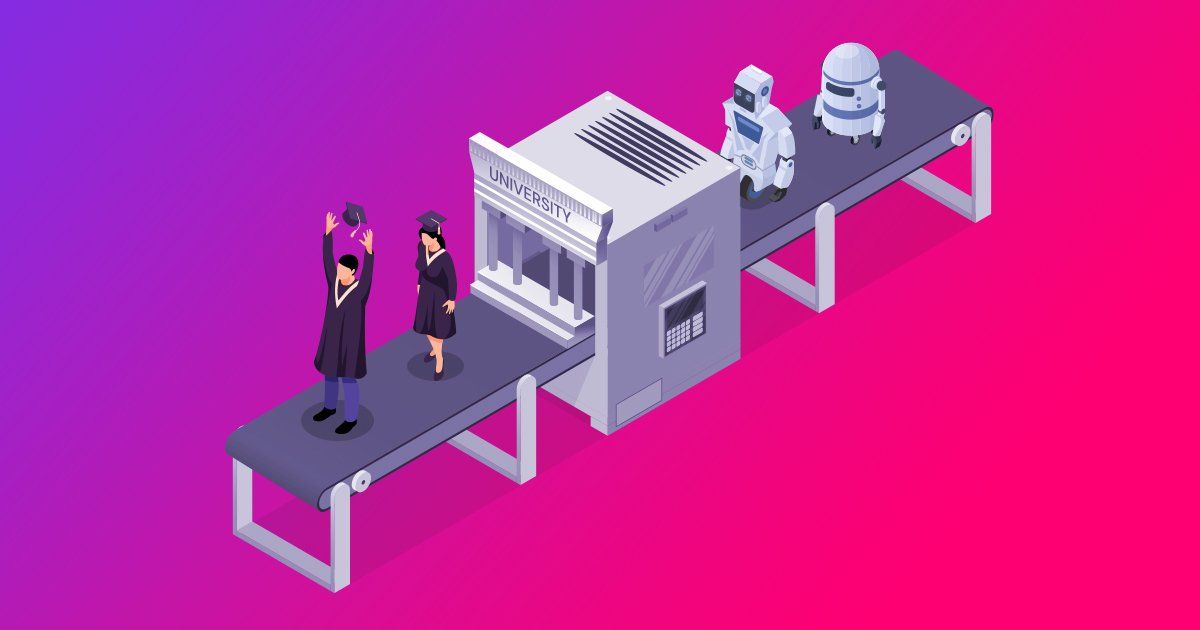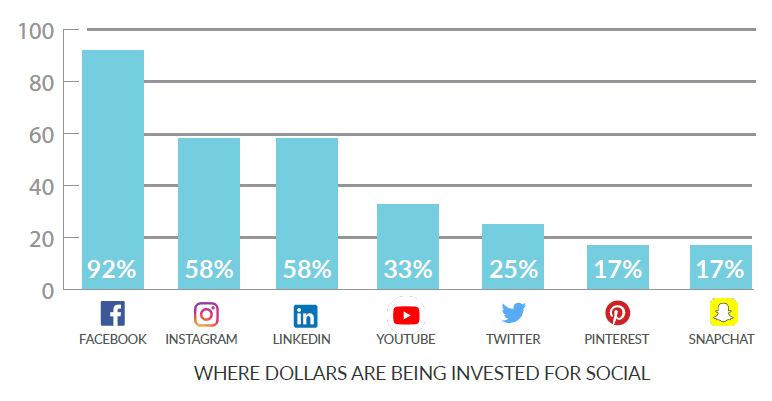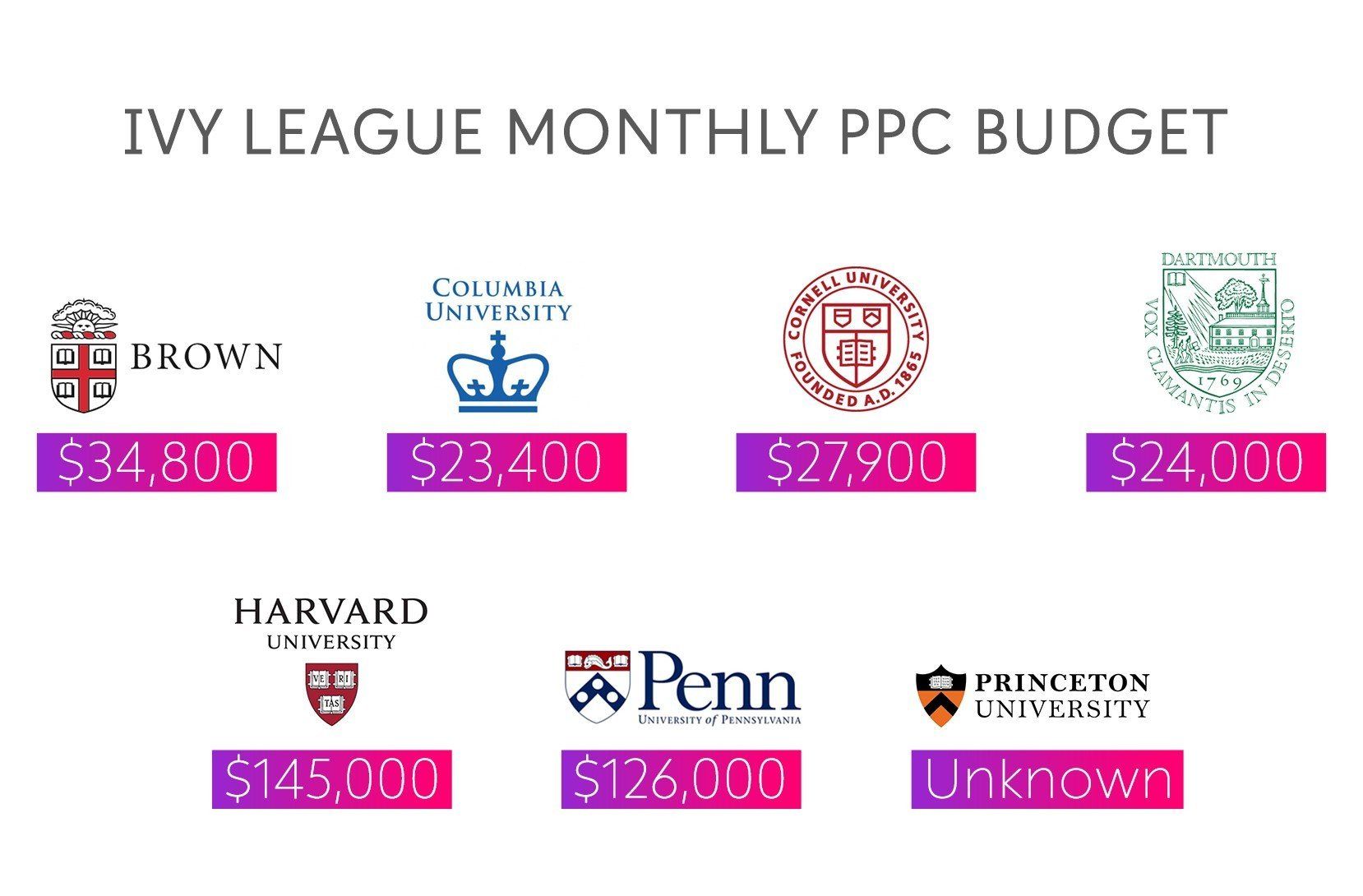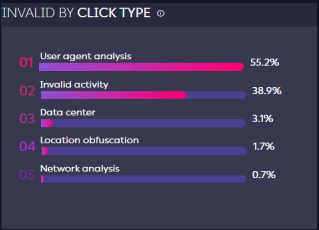How bots replace students in higher education funnels
Jonathan Marciano
|Marketing | May 24, 2021

Customer acquisition – the process of bringing new customers or clients – is at the heart of every business. This includes “the business” of higher education. For higher education marketers, the most important metric is student acquisition cost, that is the cost to acquire an enrolled student. This metric, which is calculated by dividing the cost of marketing by the number of students enrolled, currently stands at $1985 per student (it can be so high because of the payoff for an enrollment can be $65,000 lifetime value, or incremental profit contribution from that student over the projected lifetime of the user).
To hit these all-important enrollment targets, paid marketing is central–with US universities spending $7 billion annually on digital paid spend to fill places. However, as we reveal in this post, often this spend ends up not recruiting students at all. Instead, online student acquisition captures bots. Lots and lots of bots in the form of fake and junk leads that university representatives spend days following up on. Based on analysis of leading US universities, we reveal the reasons behind this growing fake student bot rise in funnels. For thousands of calls made to fake users this represents hours contacting (often real) people whose phone numbers have been faked or stolen.
Overall, this little-talked-about attack is seeing colleges missing out on revenue opportunities and threatens to undermine enrollment.
The golden metric: student acquisition
To understand the rising challenge of students being replaced with bots, it is worth spending some time looking at the mechanics of student acquisition. Naturally, enrollment numbers are the number one priority. Southern New Hampshire University (SNHU), for instance, set an ambitious target to enroll 300,000 students by 2023. Paul LeBlanc, the university’s president says: “We put a number out there because when you do strategic planning, you want to give some sense of scale.”
In a 2021 survey, 86 percent of college presidents put the hitting of fall or summer enrollment numbers at the top of their most pressing issues. The battle for students has no doubt been impacted by COVID-19 which shrunk the number of students (who are deferring or finding other options). Consultancy, McKinsey suggests that US universities could see a drop of up to 20% in the fall of 2021, which would deal a $19 billion revenue loss from lost tuition and fee revenues alone.
To reach their student numbers, colleges are investing big on paid marketing through digital channels to hit their numbers.
The rapid rise of digital customer acquisition
The rise of customer acquisition using paid search and paid social is growing fast. In 2019 the college spent $19.6 billion on advertising as a whole in the US. Based on current market share of digital advertising for education, we have found that the US spends $7billion on digital advertising in education. This has only increased due to a need to scoop up students from a smaller pool. Higher education Facebook advertising increased 7% during the pandemic compared to the same 10-week period in the previous year. The average Facebook ad spend was $131,402 per institution, or about $54,000 per month. Brick-and-mortar schools ramping up advertising include Purdue and the University of Florida, which promoted their online programs, and MIT and UC Berkeley, which pushed their online technology course offerings. Typically, institutions spend 5% of their annual revenue on marketing with some outliers, such as SNHU spending 17%. For illustration, in 2018 SNHU spent for instance almost $47 million to Google and over $85 million to their media buying and planning agency (Mediassociates). Their cost per enrolled student is $1134.
The power of PPC marketing in this sphere is also huge – 83% of education marketers say that PPC is a huge driver for their brand.
How big is online customer/student acquisition fraud?
So, looking at these fast-scaling digital college customer acquisition campaigns, how big is the problem of bots and fake users in reality? How are bots and fake users actually infesting campaigns? At CHEQ we see 6% of invalid clicks across paid digital customer acquisition for higher education campaigns, among the highest for any sector. To be clear, this reflects clicks of users on paid media online by clickers who are not human, are definitely not interested in, say, a law degree, and will never enroll. The problem involves sophisticated automated bot attacks.
What are fake student bots clicking on anyway?
Based on analysis of more than 20 colleges we work with, bots are making thousands of clicks per day per institution. We found bots made up between 1.7% to 19% of clicks on the brand university name (the paid brand click) and 1.7% of all clicks on law degree landing pages. Analyzing specific campaigns, most flagship undergraduate intake campaigns saw bot clicks of 5%. Clicks for expensive “Master’s degree” and “academic degrees” kewyords turned out to be mostly data center traffic.
How invalid bot clicks attack higher education customer acquisition campaigns
Bots drive junk through brand funnels using methods including VPNs, data center traffic, scraping, and click fraud.
The graphic below aggregated from the CHEQ for PPC dashboard shows how bots were spotted and the tactics they use to evade detection.
However, wasting money capturing bot-driven fake leads, is not the only (or even main) challenge faced by colleges. The much larger effects include everything from long-term missing out on revenues, to bringing up costs for institutions and students.
1. Losing hours reaching out to fake leads
Teams at colleges we speak with spend hours, or days in some cases, reaching out to fake leads generated by bots. This is because of the importance of “speed of lead” and calling future learners as fast as possible (SNHU representatives typically return 98 percent of new lead calls in under three minutes according to LeBlanc). But increasingly forms filled turn out to be simply bots using stolen or junk details. In the words of one university marketing head, we worked with to eliminate bot clicks: “We were getting a lot of bad email addresses and a lot of bad phone numbers and even the same bad email addresses a lot of times in the same day.”
This is caused through bots run by ad fraudsters, who end up “converting” into a college lead by filling in details on a form (name, email address, phone number). If no email verification is required, the fraudster has no reason to use a real address and can just send random ones. If email verification is required, the fraudster controls the email addresses which he inputs. This can be done in various ways; the fraudster buys bulk addresses which redirect every email to an email address the fraudster controls.
2. Data and CRM chaos
Data is now considered the “oil” of customer acquisition in universities, but bots are seeing this core data flunk most tests. Speaking about the importance of data in education, Rob Zinkan, associate vice president, marketing, at Indiana University says: “Higher education marketing departments should be able to bring data, insight, and an intimate understanding of the consumer to enable their institutions to identify future opportunities and forge new directions.”
Elsewhere, UMUC has a designated “data czar” to help define standards for how information is captured, managed, shared, and stored online.
Ryan Klotz, the Director of Enrollment Analytics and Territory Development for Saint Louis University, says it is more critical than ever to deploy effective data analytics. “Competition has tightened, and enrollment is not guaranteed,” he says.
But what if much of the fundamental data is wrong? One of the biggest problems faced is mountains of bot clicks fogging up this data. To take only one example, we see an average 8.9 bot return rate among bots in education. These eager clicks can be mistaken for interested students and can lead to (poor) decisions based on fake activity.
Bots also send the wider data instruments used by marketers, including higher education marketers, into a frenzy. Analysis of the top-20 spenders in US higher education shows web analytics (75%) and heatmaps (used by 28% of universities) are most commonly used by higher education marketing teams. However, with thousands of visits on education sites as a result of click fraud, bots, or invalid clicks often these findings turn out to be useless.
3. Lost revenue opportunities from fake bot students
Lost revenue opportunities occur when a company makes less from operations than expected due to fake or bot users. Traditionally, of course, revenue loss projections involve long-term thinking about new regulations or drops in demand – instance, decreased enrollment, tuition discounting, declining international student enrollment. However, staying invisible, and unforeseen are the opportunities lost through fake users and bots filling funnels. The net effect is that education companies are leaving money on the table by capturing bot attention instead of real eyeballs. While institutions can expect $65,000 lifetime value from a real student, fake users swept up from these campaigns deliver zero revenue and zero lifetime value. If this spend was invested in real students, the revenue opportunities stand to be in the millions of dollars.
4. Draining budgets in the morning
We also see bots (before CHEQ blocks invalid clicks) putting their foot down and clicking on ads to drain budgets. By draining budgets of an advertiser early in the morning this effectively puts auto brands out of commission for getting real customers that day. Universities saw the highest rate of bot attacks at 9am (4% invalid clicks). Even bots pretending to be students sleep in compared to sectors such as online gambling it seems. In cases of university invalid clicks analyzed, the user agent provided in the bid request had anomalies that were obvious invalid traffic including browsers that do not exist and incorrect system information. For some universities it represented $6000 a week lost to bots.
5. Bogus retargeting of fake students
Student acquisition faces a lengthy “sales” cycles. Naturally, students take several months, and potentially lots of clicks, before deciding on this major life decision. This is where retargeting is very popular in education PPC –enabling you to show your ads to your visitors after they leave and keep your institution top of mind. However, as we see in many campaigns, with click fraud challenges, money ends up retargeting bots, rather than real students, and further money is lost on wasted clicks.
6. Fixing traffic signals delivered to Facebook and Google
Finally, Facebook and Google are motivated to get advertisers the best results for their campaigns (so that more and more money is spent on these channels). To reach new customers, brands are reliant on these channels to work effectively (Facebook and Google have a combined market share of 57% of US advertising so can capture a lot of students). The way it works is that pixels, such as on university sites, tell these advertising giants which users engage the most. This prompts a call for “lookalikes” to ask for more of these “good” visitors to the site. However, with millions of invalid clicks, brands are inadvertently transmitting the wrong information about good leads, hampering paid platforms’ ability to parcel out the best audiences. This hurts organic and paid marketing results long term.
What is customer acquisition fraud in higher education digital marketing?
To counter this rising problem of bots and fake users in higher education, customer acquisition security is the means used by marketing and revenue leaders, to eliminate the fast-growing problem of fake users and bots from customers’ funnels, campaigns, analytics, and CRM. For instance, teams use CAS to legitimize the clicks on their advertisements across all platforms by identifying and filtering out fraudulent clicks. This adds millions of dollars in new revenue and ensures more predictable data. The use of customer acquisition security is transforming marketing, analytics, operations, and revenue decision making.
In the words of a media agency director working with a top US university the problem is clear-cut. “Our whole purpose is to drive leads to the college of prospective students to their undergraduate or graduate level education. What we have found across a couple of programs is we are driving leads on the front end but when we try to qualify them on the back end, some of them were just not the high quality leads we were looking for. So that is where CHEQ emerged as a solution to improve the quality of traffic we are driving to our campaigns.”
With enrollment challenges, campuses have to make sure they are spending their vital marketing dollars on the right initiatives to usher students through the doors. Bots make poor leads and worse students.
CHEQ for PPC is a security suite for the CMO, digital teams and demand generation leader to track bots and fraudulent activity from all major search engines and social media platforms. CHEQ for PPC is the first solution to block invalid clicks across multiple platforms including Google, Facebook, Instagram, Baidu, Bing, LinkedIn, Snap, Twitter, Pinterest, Yahoo, Yandex and more. Get your free demo here.
















